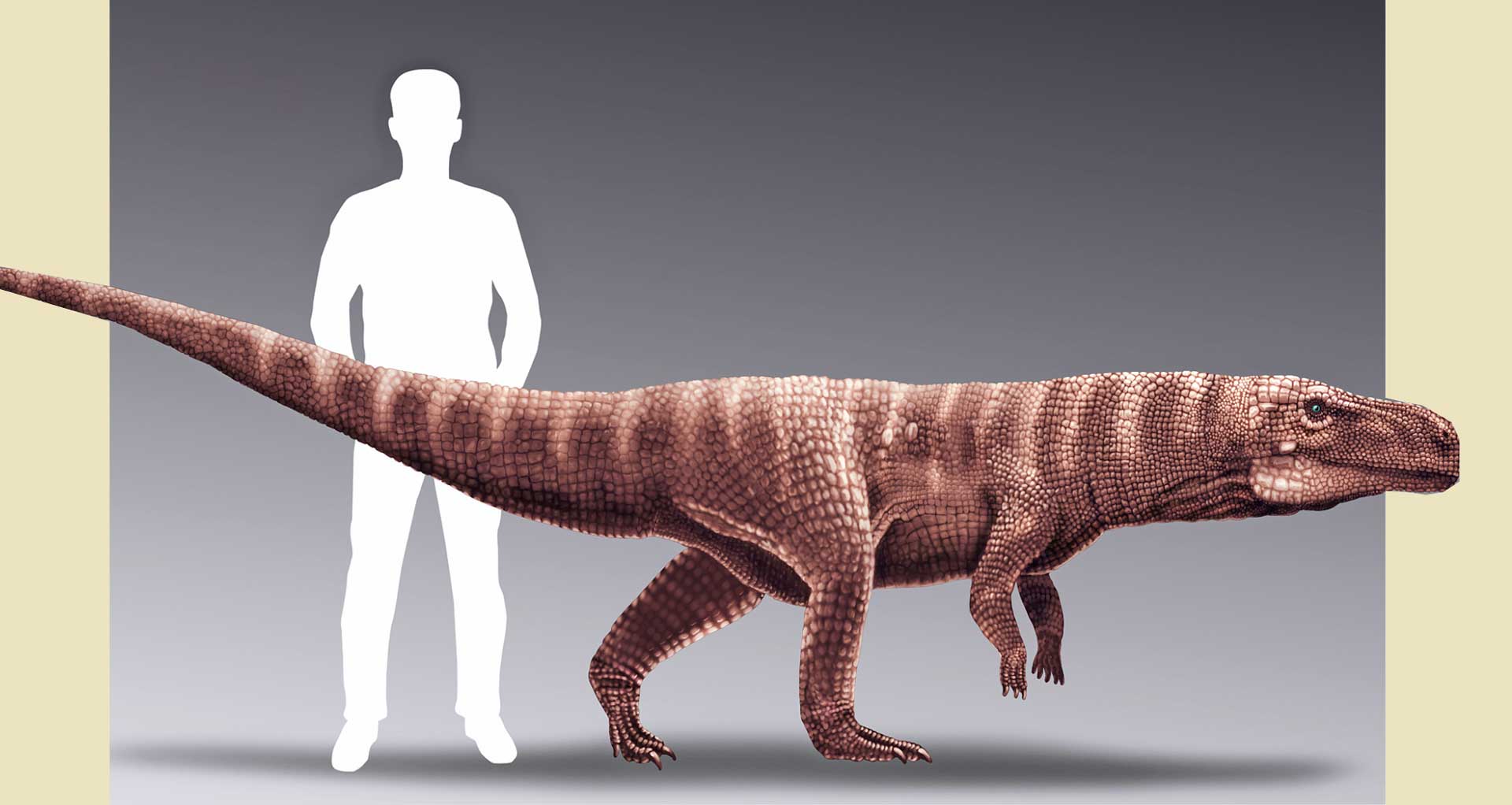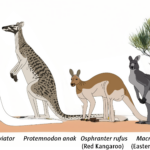
Scientists have found evidence that crocodile ancestors walked on their hind legs – like a Tyrannosaurus rex.
Modern crocodiles crawl forwards with four legs all to the sides, but 120 million years ago, a crocodile was walking upright on two legs in what is now South Korea, according to footprints that used to present a puzzle for scientists.
The best previous theory was that these were made by pterosaurs, but now scientists from South Korea, the US and the University of Queensland have ruled out this possibility, because there are only rear footprints. Pterosaurs also used their wings to take off, and there is no evidence of that.
Instead, the scientists conclude that the prints were made by a prehistoric crocodile which walked on its hind legs like two-legged dinosaurs. But unlike dinosaurs, which tiptoed around, the crocodiles walked on their flat feet, putting their heels down, as do we. In one of the prints, scientists can see an impression of the skin of the heel, and the texture is much like the skin under the feet of modern crocodiles.

Scientists have no fossils, but have used the size and distance of the footprints to estimate that the crocodile, named Batrachopus grandis, was about 3 metres long, with hind legs the same length as those of adult humans.
The crocodile put its feet in front of each other in an almost straight line, below its own centre of gravity, which is the most energy-efficient way of carrying one’s own weight. Together with the long legs, it indicates that the prehistoric crocodile was able to move longer and faster on dry land than can modern crocodiles.






